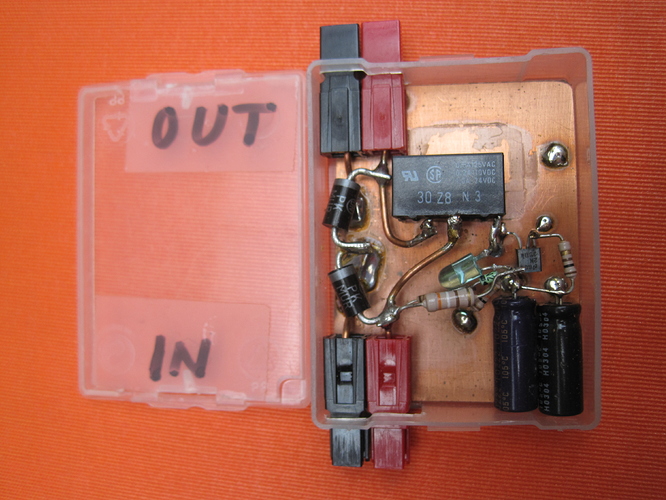I posted about this before in this thread :
Two diodes are over the NC contact of the relay.
When the voltage is high (and when you have some power to spare …) , the relay is activated and keeps the diodes in circuit, also the LED is ON. After a while, when the input voltage drops to approx. 15V, the relay is released and shorts the diodes, so the circuit draws almost no power for the rest of the time.
It is automatic, but of course I must not forget to insert the little box, hi.
No harm will be done if I feed my KX3 with 16.8 V, it will just say “OVER 16V” in the display, and refuse to operate (Yes , I tested that !).
Not sure what the FT817/818 would do …
Here a better picture of the reducer, it weighs just 40 g.
73, Luc ON7DQ
